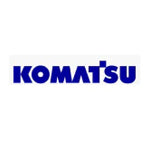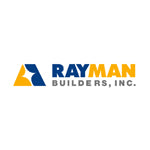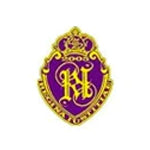How to Make an Image into a Patch (The Simple, Pro Way)
Have a logo, doodle, or team emblem you’re proud of? Turning that image into custom patches is one of the most timeless ways to show it off—on jackets, backpacks, caps, uniforms, you name it. Below is a clear, step-by-step guide to go from artwork to a durable, professional patch you’ll love using (and reusing). When you’re ready, you can get started with Craft Clothing’s custom patches.
Step 1: Choose the Right Patch Style for Your Artwork
Different images shine in different patch styles. Here’s a quick cheat sheet to match your design with the best look and feel:
-
Embroidered patches – Classic, textured, and premium. Great for logos, badges, and bold icons with solid shapes.
-
Woven patches – Better for smaller details and thin lines when you want more resolution without heavy texture.
-
Chenille patches – Fluffy varsity look, perfect for big letters or bold mascots.
-
Printed (sublimated) patches – For photo-level or gradient-heavy artwork.
If you’re unsure, start with embroidered—it's the enduring favorite for uniforms and merch because the stitching literally “builds” the design, making it tough and long-lasting.
Step 2: Prep Your Image Like a Pro
A strong patch starts with clean art. Do this before you send your file:
-
Simplify shapes: Remove unnecessary shadows and tiny gradients. Think bold, readable, and iconic.
-
Thicken thin lines: Aim for clear outlines that will still read well once stitched.
-
Limit color count: Patches look best with purposeful color blocking (and this also makes them cleaner at a glance).
-
Export clearly: PNG, AI, PSD, or high-resolution JPEGs work. Keep edges crisp; avoid fuzzy screenshots.
Tip: If you only have a rough sketch, that’s okay. Craft Clothing’s team can refine it and create a stitch-friendly version that keeps your original vibe intact.
Step 3: Decide Size, Shape & Border
These choices affect both aesthetics and durability:
-
Size: Common heights range from 2"–4" for badges, and 8"–12" for jacket back pieces. Smaller patches = fewer details; larger patches = more room to show off.
-
Shape:
-
Standard (circle, shield, rectangle) = timeless and uniform-friendly.
-
Die-cut (custom silhouette) = unique and brandable.
-
-
Border:
-
Merrowed edge (rounded, rope-like finish) is sturdy and classic for standard shapes.
-
Laser-cut/satin edge is sleek and ideal for custom silhouettes and sharper angles.
-
Step 4: Pick Your Backing (How You’ll Attach It)
How you plan to apply the patch will guide your backing choice:
-
Sew-on: Most secure and washable for heavy use uniforms and bags.
-
Iron-on/Heat-seal: Quick application with a household iron or heat press; great for tees, jackets, and caps.
-
Hook & loop (Velcro®-style): Swappable patches for uniforms, clubs, and event crews.
-
Adhesive/sticker back: Temporary use (not for laundry), ideal for short-term events.
If your patch will see frequent washing or daily wear, go sew-on or heat-seal for long-term hold.
Step 5: Choose Threads & Finishes
The right materials elevate your image into something people want to touch:
-
Standard rayon/poly threads: Vibrant and durable for everyday use.
-
Metallic threads: Add premium accents to borders or titles (think gold/silver trims).
-
Glow/reflective accents: Fun or safety-forward touches for events and outdoor crews.
-
3D foam (puff) embroidery: Adds sculpted dimension to bold letters or icons.
Keep accents purposeful—used sparingly, they create a focal point that makes your patch pop.
Step 6: Digitizing—Turning Art into Stitches
Behind every great embroidered patch is a great digitized file—this is the roadmap machines follow to lay stitches. The quality of digitizing determines:
-
How clean your edges look
-
How readable small text is
-
How smoothly curves stitch without puckering
With Craft Clothing, digitizing is handled by seasoned stitch artists who translate your image into proper stitch types, directions, and densities so your patch looks crisp and wears beautifully over time.
Step 7: Approve a Visual (or Physical) Sample
Before full production, review a mockup or sample:
-
Check scale: Will small details still read at the chosen size?
-
Assess colors: Confirm thread choices under normal lighting.
-
Edge & backing: Make sure the border finish and attachment match your plan.
Need tweaks? This is the perfect stage to refine.
Step 8: Production & Quality Checks
Once approved, your patches go into production. At Craft Clothing, each piece is inspected for:
-
Stitch consistency and coverage
-
Color accuracy
-
Clean edges and backing adhesion
-
Overall finish and durability
The result? Patches that look sharp on Day 1 and still look great after many washes.
Step 9: Apply Your Patch (Sew or Heat—Your Call)
For sew-on:
-
Pin in place, stitch close to the edge with matching thread, and knot securely on the inside.
For iron-on/heat-seal:
-
Set iron/press to medium-high (no steam).
-
Place a pressing cloth over the patch.
-
Press firmly 15–25 seconds; let cool; press again if needed.
-
For heavy garments (like jackets), add a few stitches for extra security.
Craft Clothing can also deliver patches pre-applied to garments if you want a ready-to-wear solution.
Quick Troubleshooting
-
Tiny details disappearing? Increase patch size or simplify those elements.
-
Curved hems resisting adhesion? Choose sew-on, or use heat-seal + edge stitches.
-
Color feels off in person? Review under natural light; thread sheen can change perception—request a thread swatch if needed.
Why Teams, Brands, and Creators Choose Craft Clothing
We’re Manila-based artisans who obsess over the small things—tight satin edges, clean digitizing, and finishes designed to outlast trends. From first sketch to final stitch, our team collaborates with you on materials, threads, and backing so your patches look polished and stay put, wash after wash.
-
Free design mockups and friendly guidance
-
Thoughtful material selection for longevity
-
Meticulous workmanship from veteran makers
Ready to turn your image into a patch that actually feels premium? Explore custom patches and let’s craft something timeless.
























































































































































